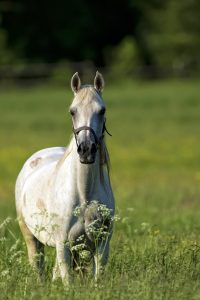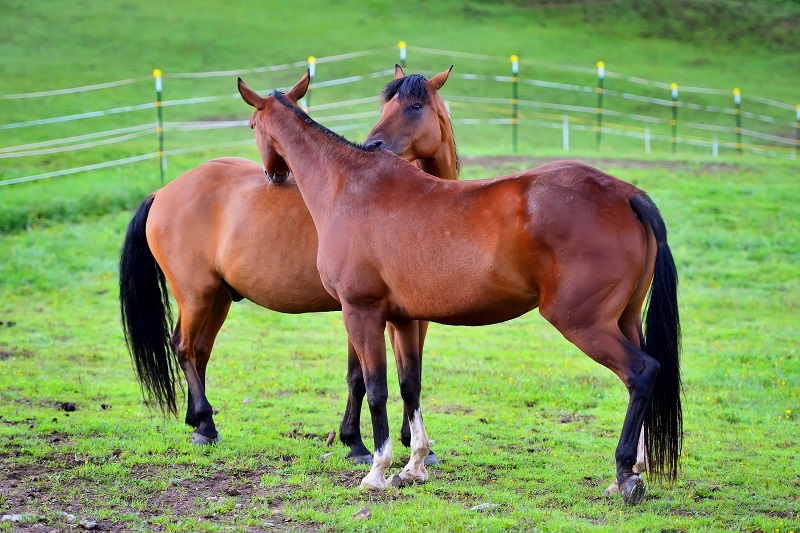Tuesdays with Tony
Two weeks ago we talked about grass and laminitis. Boy, were you guys excited about that topic. I’m going to be super-generous (we cats can be generous, you know) and give you more information on sugar. Come with me on a journey through the weird, wacky world of sugar and starch.
Sugar is sugar, isn’t it?
Nope. There’s sugar and there’s starch. These two things combined are the important number for your horse’s diet. That number is called NSC, or Non-Structural Carbohydrates, by feed companies. NSCs are things that don’t need to be broken down by fermentation in the hind gut, and are rapidly absorbed by the small intestine. Know how you get a kid to run around like a maniac by giving them a lollipop? That’s NSC. In general, you horse people are not looking for your horses to run around like maniacs.
The other problem with NSCs is they turn into fat deposits really quickly. Same thing happens in humans and cats. The body says, oh hey, I have excess food right now, I should store that away in case something bad happens and I need food later. In horses (and humans and cats) some individuals and breeds are better at storing than others. In general, the working breeds (like ponies) and the desert breeds (like Arabians) are really, really good at storage. If you apply some thinking to this, it will make a whole lot of sense. Deserts are not noted for a large amount of food laying around. Working breeds shared food with their owners. The more food either of these types needed, the less desirable they were. As a result, they have been bred for many, many, many generations to be “easy keepers.” On the other hand, think about Thoroughbreds. Historically, no one has cared how much their Thoroughbred ate. They were sports cars. And no one buys a Lamborghini for the gas mileage.
 Sugar is bad, then?
Sugar is bad, then?
It depends. It’s the ultimate answer, really. Appropriate in every circumstance.
NSC’s over 18-20% are less than ideal for the insulin-resistant horse. However, if that insulin-resistant horse is performing, they will need some sugar to perform at their best. You see, sugar is the best readily available energy source. Ever known a crazy human who runs marathons? That carb-loading they do the night before is to make sure they have plenty of quick energy on hand the next morning when they need it. Now, I’m not saying go carb-load your horses, but getting sugar levels too low in a horse who needs to do some serious work can cause them to fizzle when you need them to sizzle. Jumping, bursts of speed, quick starts and stops, all of these require carbs. This means a carefully controlled diet may be needed to get the best performance out of your horse. I will once again mention: Call my minions for help with this. Diet balancing is hard!
What the heck am I supposed to feed then?!?
A lot of factors go into the right choice of feeds for these horses. In general, look for a feed that is pretty low NSC. Triple Crown Senior and ration balancers like Nutrena Topline Balance are good places to start. Forages can be tricky. Alfalfa and peanut are lower in sugar, but lots higher in calories. My minions often work hardest to help you humans come up with a good forage plan for these horses. Luckily they have loads of experience. For extra calories, if they are needed, add fats like vegetable oils. I know, seems weird, but fat doesn’t cause insulin to be released so it’s very, very safe for these horses.
Weather obsession
During the craziness that is Florida Spring and Fall, be very aware of the weather. As I type this, it’s 39 degrees. Last week it was 89 degrees. That beautiful green grass that was high in sugar last week is SUPER high in sugar this morning. This little cold snap has all the grass freaking out. To be sure the plant saves all it’s hard earned sugar, it’s sending it down to the roots. When your horse grabs that grass down close to the ground, he’s getting a delicious bite of grass-flavored lollipop. The schizophrenic weather makes grazing muzzles an absolute must this time of year.
What’s a human to do?
Luckily, we have options! Start by controlling what you can control. Hay analysis will let you know how much sugar is in your hay. Check with your feed manufacturer to find out what the sugar levels are in your horse’s grain. Now you know where you stand on the things you give your horse. By keeping these sugar levels in check, you can allow your horse to graze as much as possible. Diet analysis is not easy. There’s lots of acronyms like EDF and NDF, and starch, and sugar, and fructans, and, on and on. Don’t worry, you don’t have to do any of this alone. I’ve got a minion to help! Call, text, or, live chat from our website and they’ll get you the answers you seek.
Once again, I’m going to tell you to be a good human. Scroll down a wee tiny bit further and click subscribe, right under those two horses in the purple box. Then you’ll see my blog every week no matter where Facebook decides to put it in your news feed. If you’ve already subscribed, then thank you! You get a treat next time you come see me, which should be Thursday at our Parasites and Deworming Seminar.
Until next week ~
Tony

Tuesdays with Tony is the official blog of Tony the Office Cat at Springhill Equine Veterinary Clinic in Newberry, Florida. For more information, please call us at (352) 472-1620, visit our website at SpringhillEquine.com, or follow us on Facebook!

You must be logged in to post a comment.